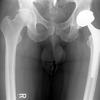environmental correspondent for The New York Times.
Elisabeth Rosenthal appears in the following:
Healthcare Mergers and Your Medical Bills
Monday, July 31, 2023
Bill of the Month: Instead of a $1,500 deductible, the charge was $500,000
Monday, December 27, 2021
Bill Of The Month: Extraction Of Doll Shoes In Girl's Nose Cost $2,659
Tuesday, November 26, 2019
Even With Insurance, the Cost of Health Care Remains a Crushing Burden
Tuesday, July 09, 2019
Old Hollywood, ACA Sign Up Deadline, Laurel & Hardy
Tuesday, December 11, 2018
Unexpected Costs, New Roadblocks of the Affordable Care Act
Tuesday, September 13, 2016
The Growth in Complex and Opaque Healthcare Charges
Friday, February 20, 2015
The Surprisingly High Cost, And Lack of Transparency, Of Simple Medical Procedures
Tuesday, December 23, 2014
Surprise Medical Bills and Other Major Health Care Costs
Wednesday, October 01, 2014
Why the Cost of Vaccines Is Soaring
Friday, July 25, 2014
The High Cost of Specialists
Tuesday, January 28, 2014
The High Cost of Emergency Room Care
Monday, December 23, 2013
New York Times reporter Elisabeth Rosenthal discusses the latest in her series “Paying til It Hurts,” about the high cost of health care in the United States compared to other developed countries. She’ll talk about the cost of emergency room care and looks at how ambulances, once free, now operate as businesses and contribute to America’s medical bills. Her latest stories in the series are “Think the E.R. Is Expensive? Look at How Much It Costs to Get There” and “As Hospital Prices Soar, a Stitch Tops $500.”
The High Cost of Prescription Drugs
Thursday, October 31, 2013
As the new affordable healthcare law goes into effect people are confused about what's legal and safe when it comes to prescription drugs.
Is Affordable Care Affordable?
Monday, October 07, 2013
New York Times reporter Elisabeth Rosenthal investigates whether the Affordable Care Act will deliver on its promise to make health financially viable. She looks into whether the policies will actually be able deliver care at manageable prices. Her article “ ‘Affordable Care’ or a Rip-Off” was in the Times’ Sunday Review on September 29.
Seeking Medical Care Overseas, at Lower Cost
Monday, August 12, 2013
Elisabeth Rosenthal talks about the high cost of hip and knee replacement surgery in the U.S., and the growing popularity of having surgery overseas. Her New York Times series, Paying Till It Hurts, is about the cost of medical care in the US. Her most recent articles are "In Need of a New Hip, but Priced Out of the U.S." and "The Growing Popularity of Having Surgery Overseas." She's joined by Michael Shopenn, who was the subject of her article.
Why Is Childbirth So Expensive in the United States?
Thursday, July 18, 2013
Weigh in: Did you have unexpected costs for maternal care? What was your experience paying for maternal health care?
The High Cost of Medical Care
Monday, June 10, 2013
New York Times reporter Elisabeth Rosenthal talks about why the United States leads the world in health expenditures, and looks at why health care is significantly more expensive here than it is around the world. Her article “The $2.7 Trillion Medical Bill,” in the Times Sunday, June 2, focuses on colonoscopies, the most expensive screening test that healthy Americans routinely undergo. It’s the first article in a series called Paying Till It Hurts: A Case Study in High Costs.
Fossil Fuels v. Alternative Energy in the U.S.
Wednesday, March 27, 2013
New York Times reporter Elisabeth Rosenthal looks at how much the United States really needs fossil fuels like oil and gas and whether alternative, clean energy from wind, the sun, and the water will ever be able to compete with fossil fuels to provide our energy needs. Her article “Life After Oil and Gas,” was published in the Sunday Review section of the Times.
EPA Orders Less Toxic Chemical Dispersants in Oil Spill Cleanup
Friday, May 21, 2010
The Environmental Protection Agency has given BP 24 hours to find a less toxic chemical dispersant to break up the oil gushing from their ruined pipeline in the Gulf of Mexico. These dispersants are used to break up the crude into droplets that will sink into the water, making them more easily diluted by ocean currents and less likely to threaten shoreline ecoystems or marine life on the surface.

















